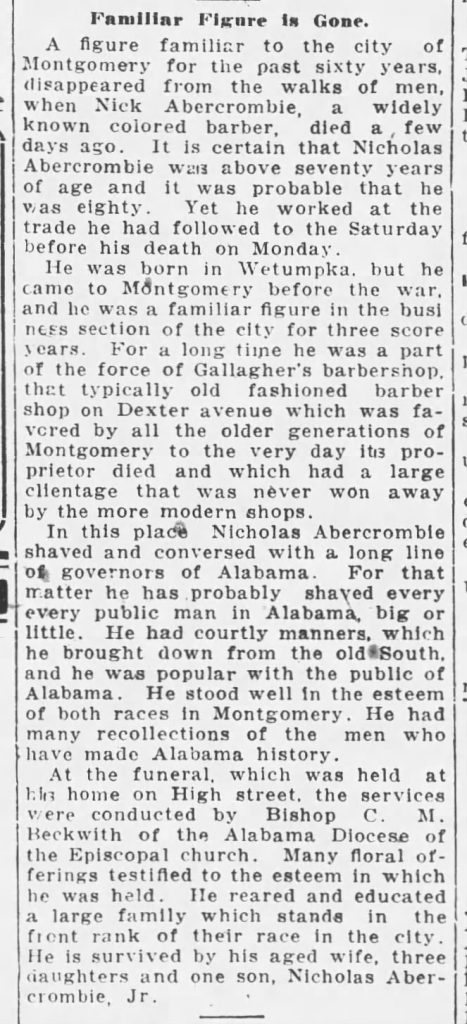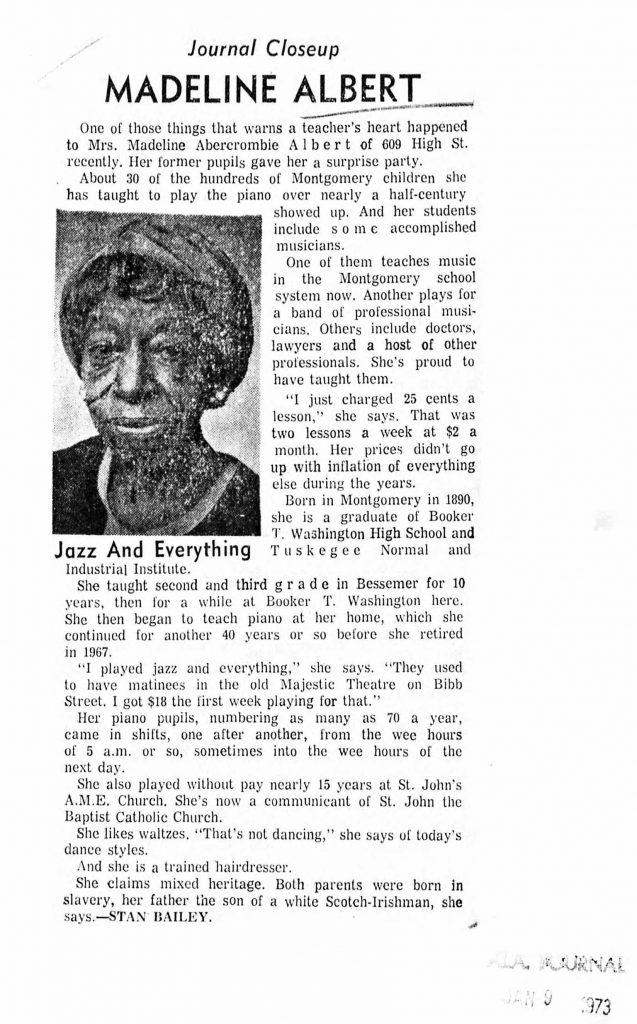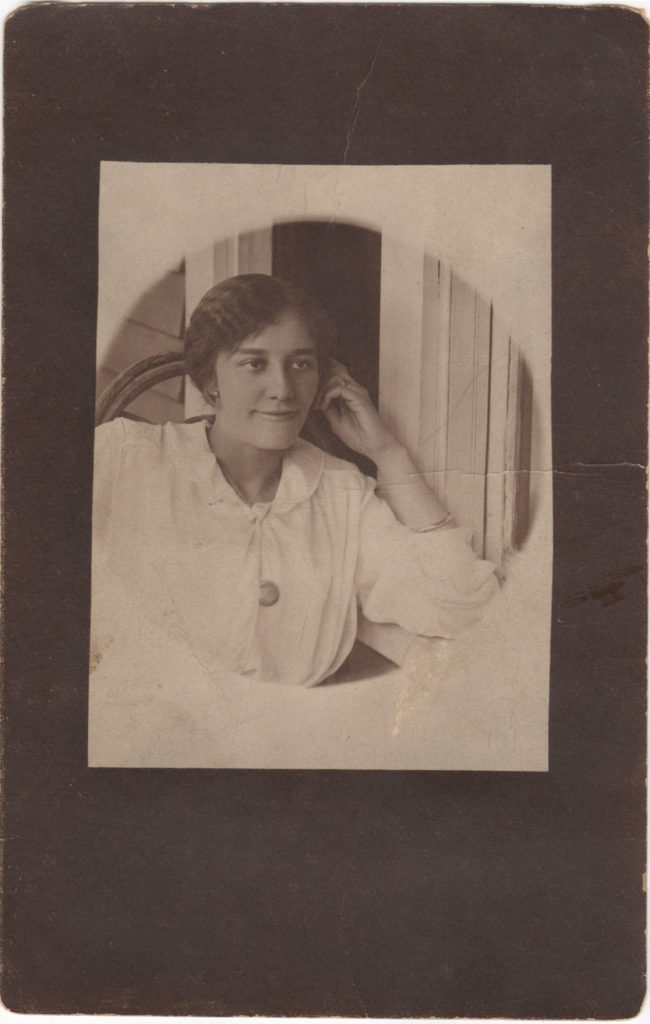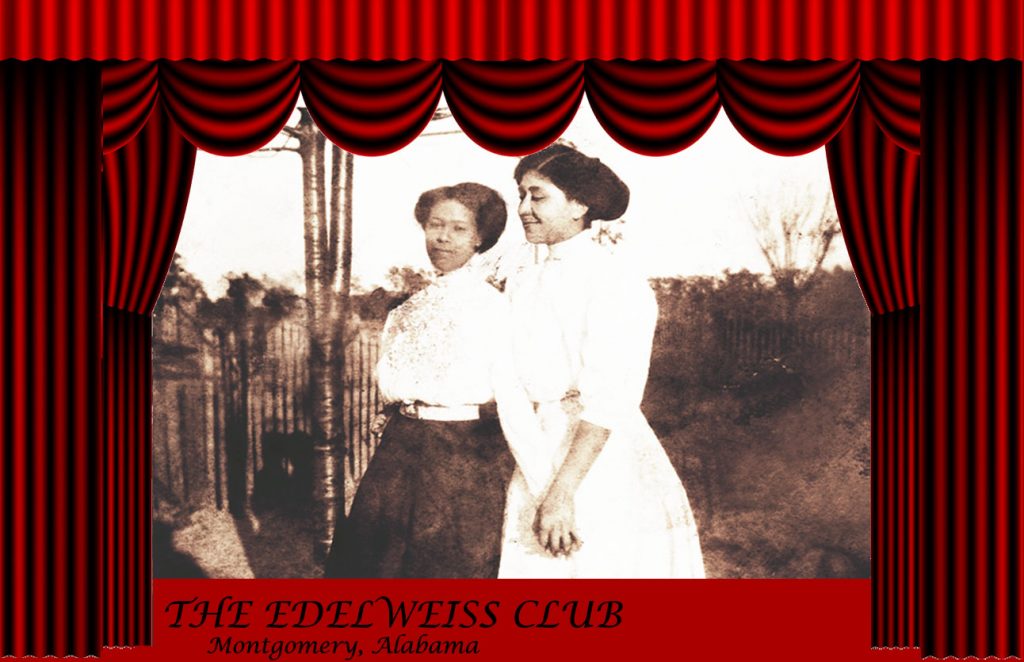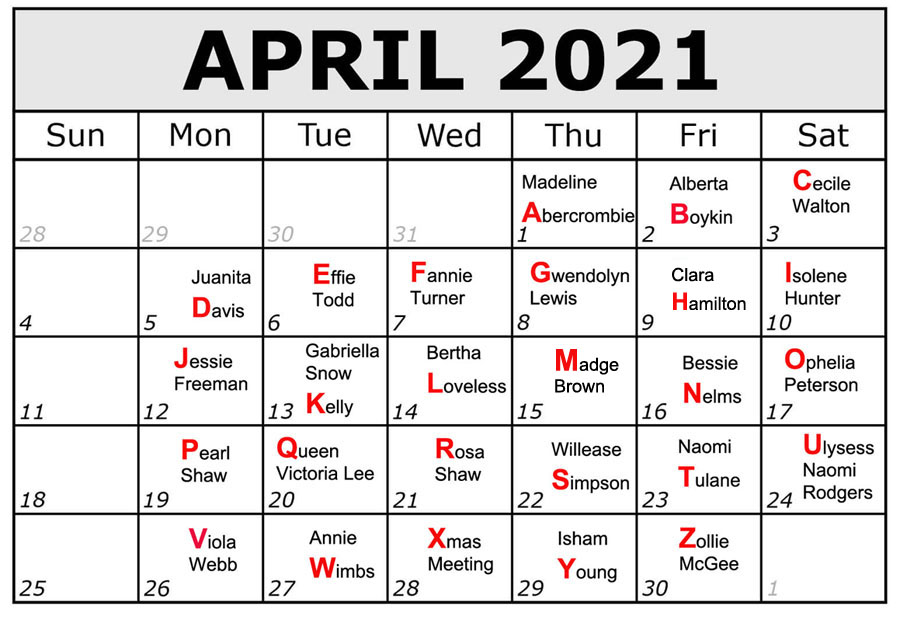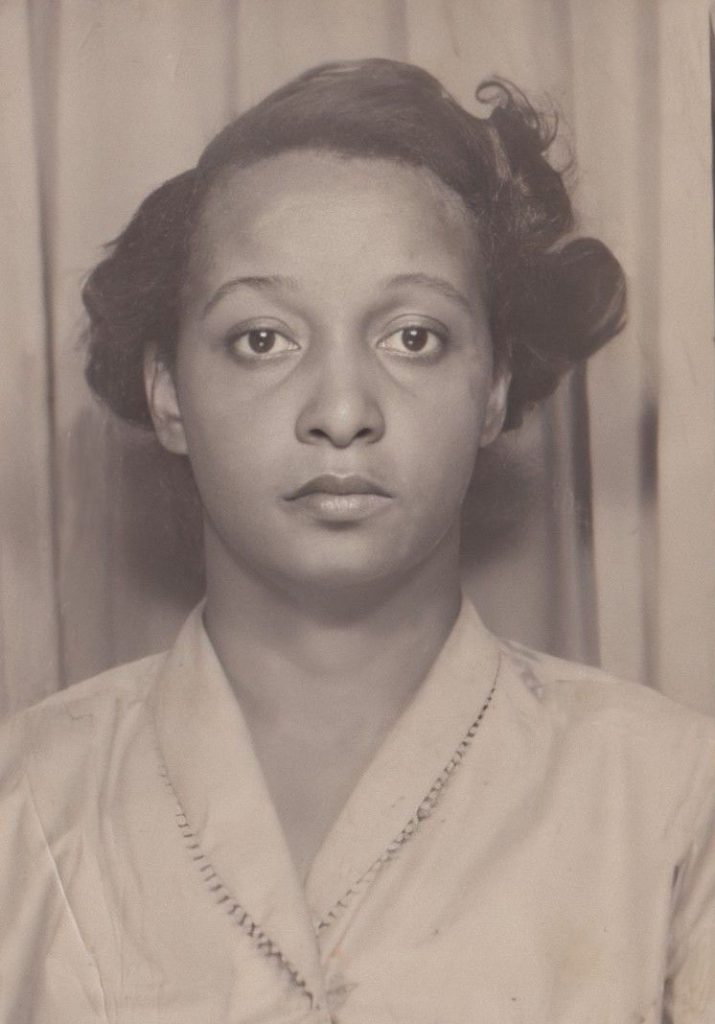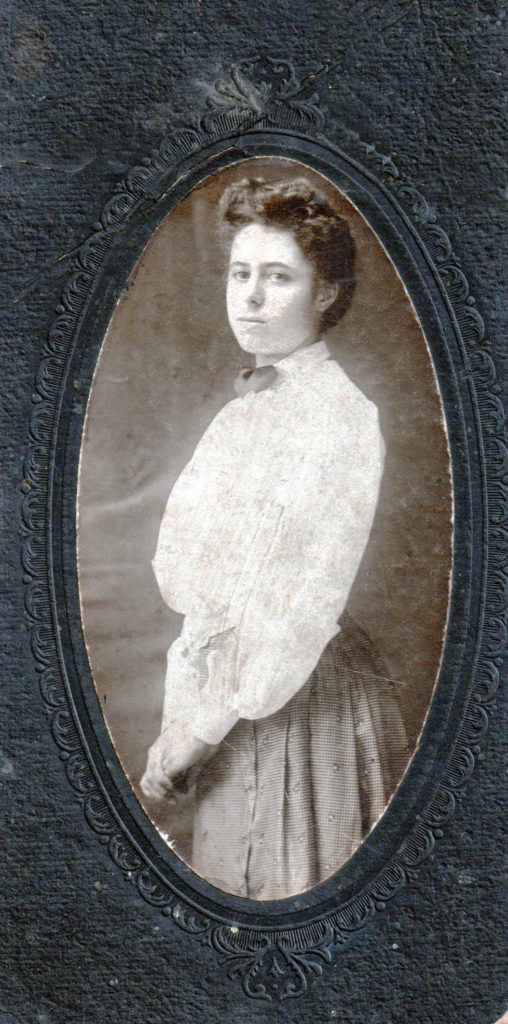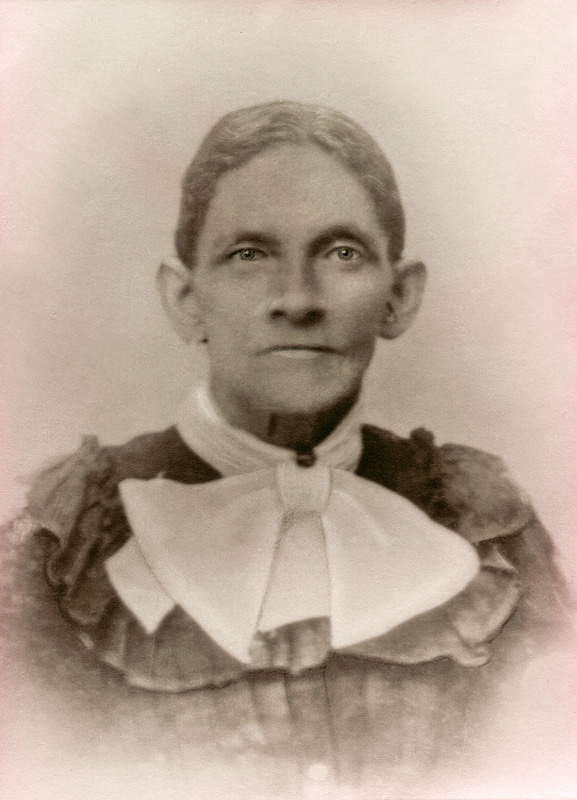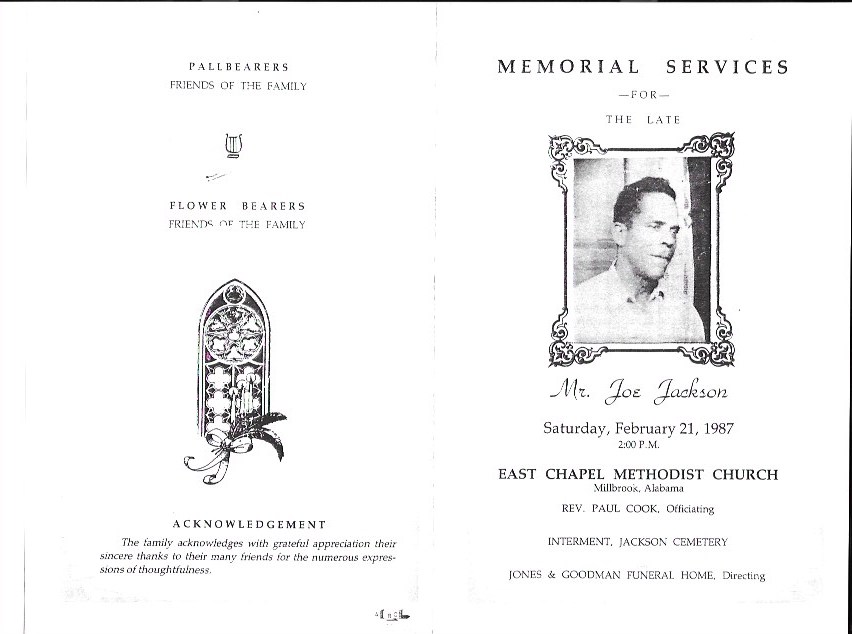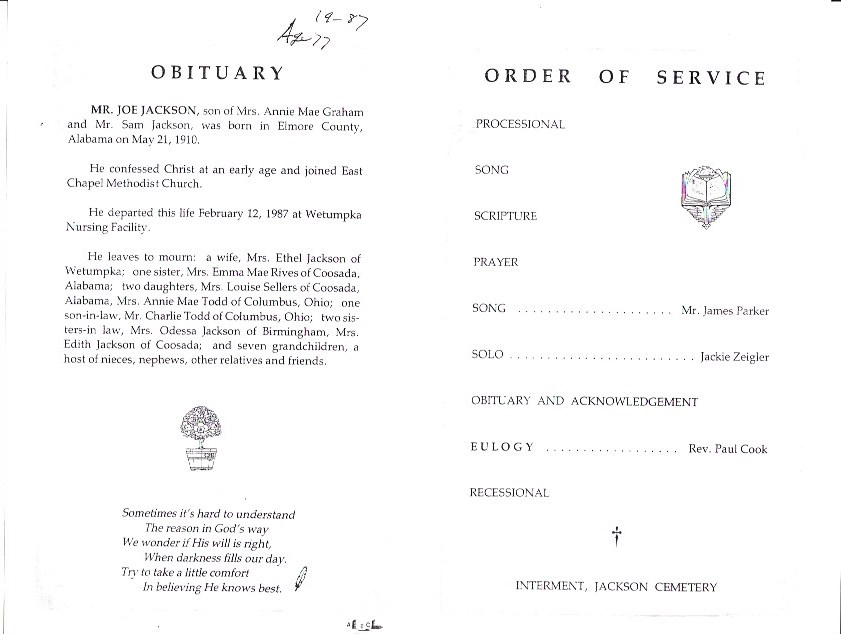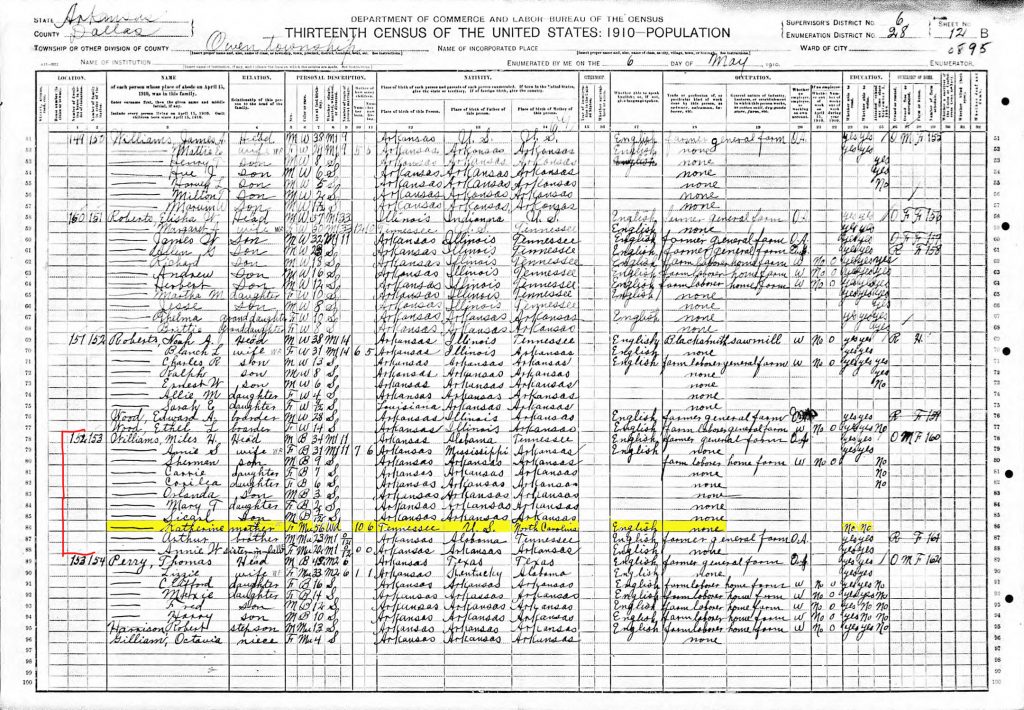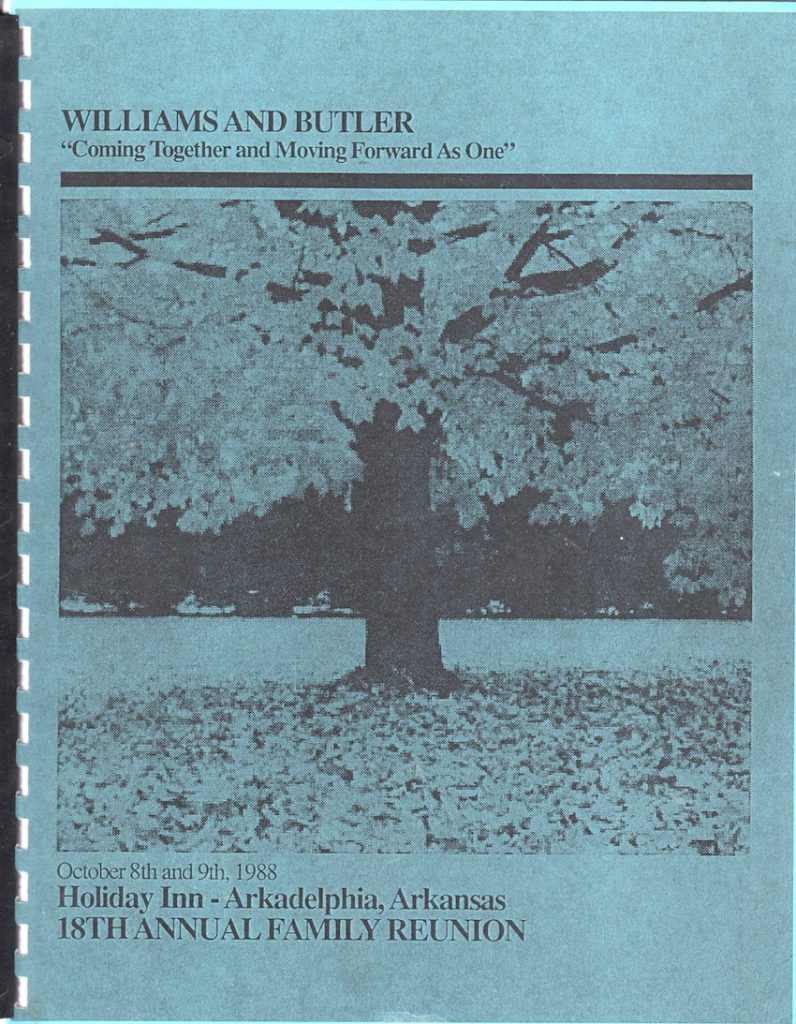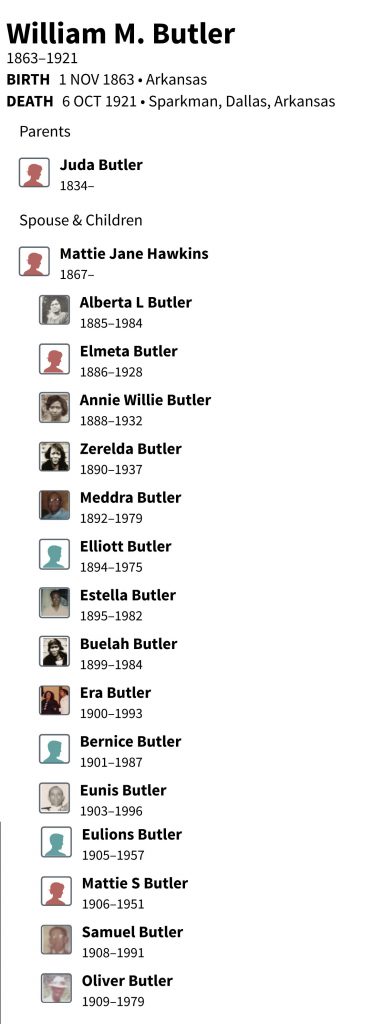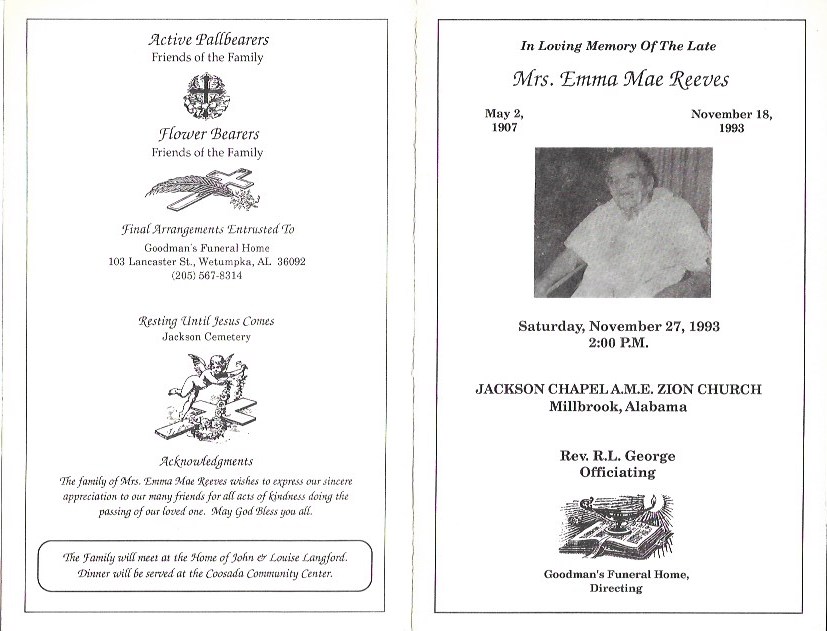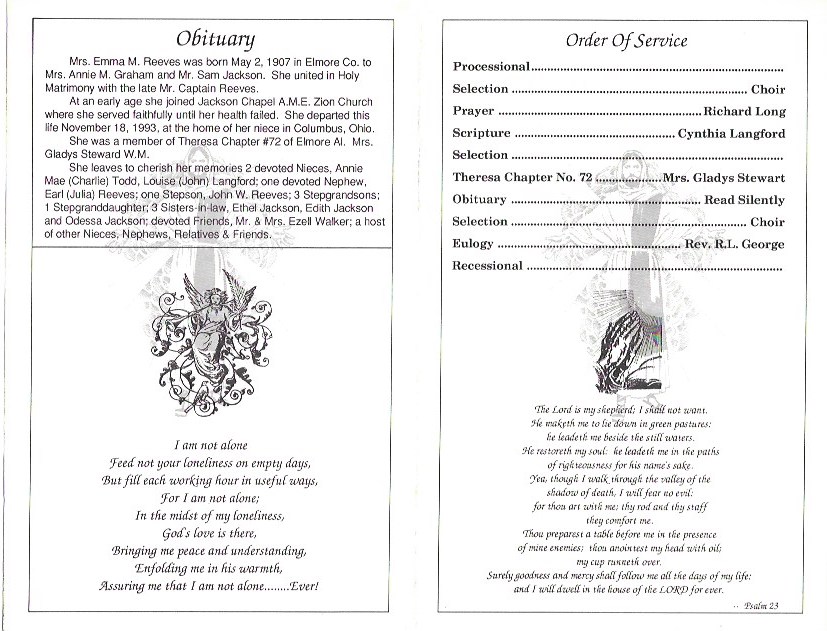In 2018 I did a series of posts for the A to Z Challenge based on articles taken from The Emancipator, an African American newspaper published in Montgomery Alabama from 1917 – 1921. I mentioned the Edelweiss Club in several posts. There were 37 young women who attended the club meetings. They were friends and neighbors of my grandmother Fannie Mae Turner Graham.
In 2021 I planned to present snapshots from the lives of some of those women as my A to Z theme. I decided not to complete the challenge that year so only completed two biographies. This is the first one.
Madeline Abercrobie was born September 7, 1890. She was the second and youngest child of Nicholas and Frances Abercrombie. She had one brother ten years older than she was. He was named Nicholas after their father. Madeline lived in the house at 605 High Street for her whole life.
In the 1900 Census Madeline was nine years old. She and her family lived at 605 High Street and attended school for eight months of the year. She, along with everybody in the household was literate.
Her father Nicholas Abercrombie was 54 years old, a self employed barber. He first appears in the 1860 census before the Civil War as a free twenty year old mulatto living with two other young men, Jack and Napolean Abercrombie, also described as mulattos. All three were barbers and did quite well. By 1883, Nicholas owned his own home, which was mortgaged.
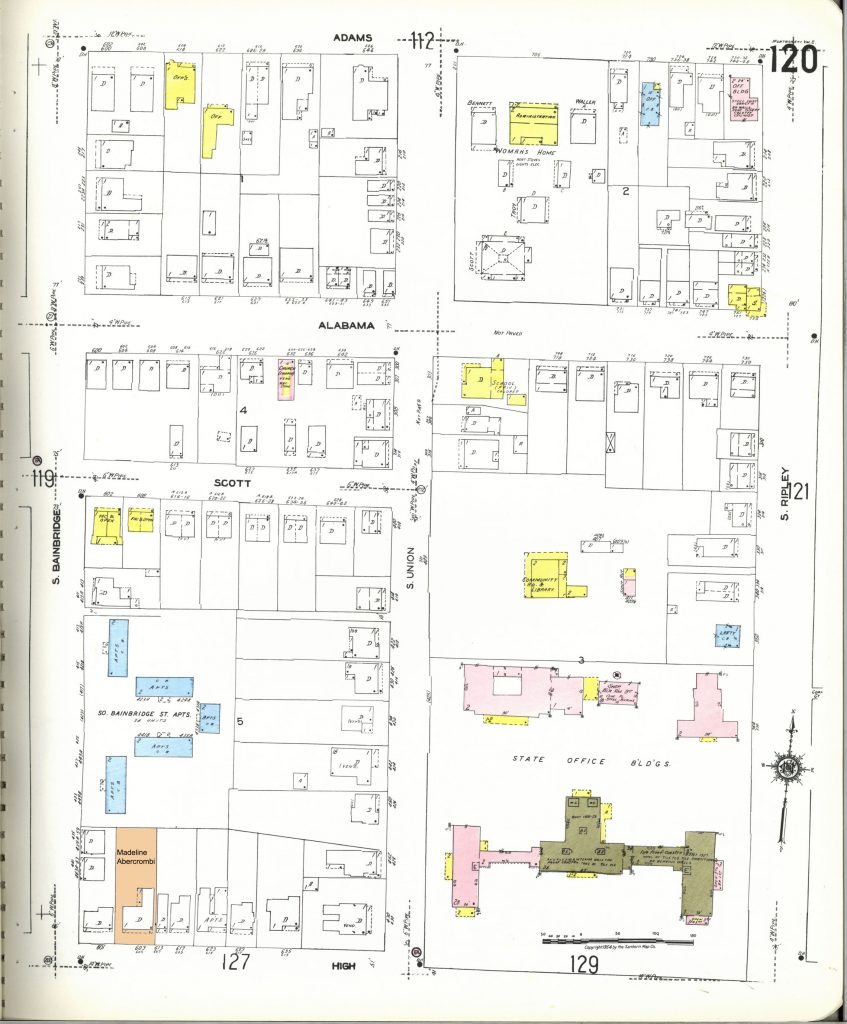
Madaline’s mother, Frances Abercrombie was 49 years old. She had given birth to two children and both were living. She worked as a seamstress from home. Two of her mother’s sisters lived in the household. Ida Abercrombie, was a teacher in the public schools. Mary Abercrombie was a seamstress, also working on her own account.
Fifteen year old Mary Hill lived with them. She was listed as a servant and was literate. She later became a teacher. She and Madaline both attended school for eight months of the year, the full school year. Everyone in the house was literate. Brother Nicholas was grown and living on his own.
In 1910 Madeline was 19. She attended school and was not employed. She was single. Her father, Nicholas was still barbering. They still lived at the same address on High Street. Their house was right down the street from Victor Tulane’s grocery store/residence. The First Congregational Church was across the street and down a block. They were well within the Centennial community.
Her mother, Frances, was no longer working as a seamstress. She had given birth to two children and both were still alive. Her first child, son Nicholas Jr. married and living with his wife and two small children nearby.
Frances’ sister Ida, 33, lived with them and taught school. They had two lodgers. Fannie Lewis a widow of 40 was a seamstress. She given birth to one still living child. Eulala Lewis, age 22 and single was a taught school. She was probably the daughter of Fannie Lewis.
Familiar Figure is Gone
A figure familiar to the city of Montgomery for the past sixty years, disappeared from the walks of men, when Nick Abercrombie, a widely known colored barber, died a few days ago. It is certain that Nicholas Abercrombie was above seventy years of age and it was probable that he was eighty. Yet he worked at the trade he had followed to the Saturday before his death on Monday.
He was born in Wetupka, but he came to Montgomery before the war, and he was a familiar figure in the business section of the city for three score years. For a long time he was a part of the force of Gallagher’s barbershop, that typically old fashioned barbershop on Dexter avenue which was favored by all the older generations of Montgomery to the very day its proprietor died and which had a large clientage that was never won away by the more modern shops.
In this place Nicholas Abercrombie shaved and conversed with a long line of governors of Alabama. For that matter he has probably shaved every public man in Alabama, big or little. He had courtly manners, which he brought down from the old South, and he was popular with the public of Alabama. He stood well in the esteem of both races in Montgomery. He had many recollections of the men who have made Alabama history.
The funeral, which was held at his home on High street, the services were conducted by Bishop C. M. Beckwith of the Alabama Diocese of the Episcopal Church. Many floral offerings testified to the esteem in which he was held. He reared and educated a large family which stands in the front rank of their race in the city. He is survived by his aged wife, three daughters and one son, Nicholas Abercrombie, Jr.
23 Mar 1917, Fri • Page 7 The Montgomery Advertiser Montgomery, Alabama
Madaline Abercrombie began teaching in 1917 at the age of 26. At first she taught in the public schools and then began giving private music lessons in her home. In 1930 at the age of 39, she married Joseph Albert. First a bit about the Edelweiss Club and then a summary of her later life.
The Edelweiss Club had it’s first regular meeting at the home of Miss. Madeline Abercrombie on High St., Friday evening Nov. 22nd despite the inclement weather, the following were present; Misses Alberta Boykin, Clara Bailey, Juanita Davis, Jessie Freeman, Ernestine Shaw, Willease Simpson, Bessie Nelms, Cecile Walton, Effie Todd, Fannie Turner, Annie Wimbs, and Mrs. Alice Cotton.
Misses Todd, Davis and Wimbs were awarded the prizes. After a delicious salad course, the club adjourned to meet with Miss Juanita Davis Dec. 6th.
Weather Forecast. For Montgomery and Vicinity – rain tonight; Friday, cloudy and much colder. East to southeast winds, shifting to north tonight or Friday morning and becoming fresh to strong. For Alabama – rain tonight; colder in north portion. Friday, colder and generally fair.
24 November 1918
Montgomery, Alabama
Dear Shell,
This has been some cold day, but we went to church this A.M. and heard a splendid sermon on “Thanksgiving,” Rev Scott never spoke better. He’s really great. The people never will appreciate him until he’s gone. Last Sunday was Harvest and it was fairly good. Might have been better but for the flu. They realized $12.50 from it. (note: = about $209 in today’s money) Our club held it’s first meeting last Friday evening at Madeline’s. She put on a strut too. We certainly had a good time. We are all feeling okay. Mama is so much better, though she complains yet...
From a letter my future grandmother Fannie Turner wrote to my future grandfather, Shell Graham (ie. Mershell)
Journal Closeup
Madeline Albert
One of those things that warms a teacher’s heart happened to Mrs. Madeline Abercrombie Albert of 609 High St. recently. Her former pupils gave her a surprise party.
About 30 of the hundreds of Montgomery children she has taught to play the piano over nearly a half-century showed up. And her students include some accomplished musicians.
One of them teaches music in the Montgomery school system now. Another plays for a band of professional musicians. Others include doctors, lawyers and a host of other professionals. She’s proud to have taught them.
“I just charged 25 cents a lesson,” she says. That was two lessons a week at $2 a month. Her prices didn’t go up with inflation of everything else during the years.
Born in Montgomery in 1890, she is a graduate of Booker T. Washington High School and Tuskegee Normal and Industrial Institute.
She taught second and third grade in Bessemer for 10 years, then for a while at Booker T Washington here. She began to teach piano at her home, which she continued for another 40 years before she retired in 1967.
“I played jazz and everything.” She says. “They used to have matinees in the old Majestic Theatre on Bibb Street. I got $18 the first week playing for that.”
Her piano pupils, numbering as many as 70 a year came in shifts, one after another, from the wee hours of 5 a.m. or so, sometimes into the wee hours of the next day.
She also played without pay nearly 15 years at St. John’s A.M.E. Church. She’s now a communicant of St. John the Baptist Church.
She likes waltzes, “That’s not dancing,” she says of today’s dance styles.
And she is a trained hairdresser.
She claims mixed heritage. Both parents were born in slavery, her father the son of a white Scotch-Irishman, she says – Stan Bailey.
Alabama Journal Jan 9, 1973, pg 5
Obituary
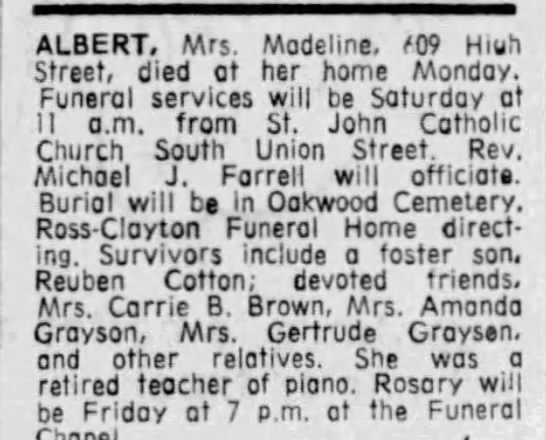
Madaline Albert died April 30 1973, Montgomery, Alabama United States. She was 72 years old and a widow.
Albert, Mrs. Madaline, 609 High Street died at her home Monday. Funeral Services will be Saturday at 11 a.m. from St. John Catholic Church South Union Street. Rev. Michael J. Farrell will officiate. Burial will be in Oakwood Cemetery, Ross-Clayton Funeral Home directing. Survivors include a foster son, Reuben Cotton; devoted friends. Mrs. Carrie B. Brown. Mrs. Amanda Grayson, Mrs. Gertrude Graysen, and other relatives. She was a retired teacher of piano. Rosary will be Friday at 7 p.m. at the Funeral Chapel. The Montgomery Advertiser (Montgomery, Alabama) · 3 May 1973, Thu · Page 57
******
Posts about the Edelweiss Club
Xmas Edelweiss Club Meeting
A to Z Challenge Theme REVEAL – 2021
Members of the Edelweiss Club (Part 1)
Mapping Montgomery (Part 2)
Alberta Boykin
Can’t Continue!

